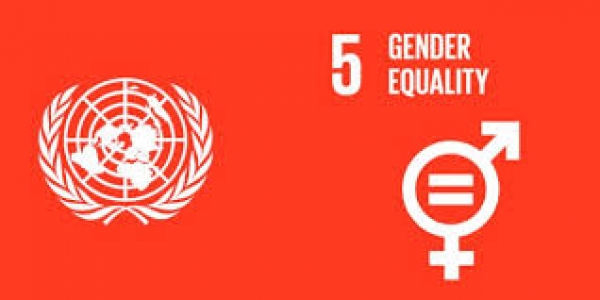Mrs. Paola Moresco teaches Italian, History, Civics and Geography at the Belli Lower Secondary School – Parco della Vittoria (Rome). In 2018-19 she has experimented Get Up and Goals! methods and didactical resources with her last-year students.
We warmly thank Mrs. Moresco for her commitment and motivation, which inspired her students and colleagues, while also adding a precious touch to the overall project. We are also happy to share her voice, collected through a recent interview.
 |
Mrs. Paola Moresco |
What Goal from the 2030 Agenda have you picked for your class?
I picked Goal 5, which is about gender inequalities.
When you decided to tackle this topic, were you already skilled on it?
Not at all. Starting from July 2018, some of my colleagues and I attended one of CISP’s teachers training courses on the 2030 Agenda and the sustainable development goals. I was intrigued by this topic, of which I knew near to nothing about. I can’t say I was an expert! I had previous experience on climate change but knew nothing on gender inequalities. Also, my class is male-dominated as I have 18 male students out of 22.
What project’s materials have you used?
I have started with the Teaching and Learning Unit by CISP. I have used all materials they provided, along with my own resources, like the some of the school’s textbooks, although they say very little on this topic. Climate change is much more discussed while gender inequalities are pretty rare in school books. Yet, they sometimes have pages on femicide as a gender issue. We have spoken about that in class, too.
What was your students’ reaction?
They have been very, very interested along the whole path. I have used the interactive whiteboard and lots of stats and data: it seems students are very interested in figures in general. Sometimes, data can speak way more than words to them.
I was afraid that they would have said something like: “I am a male, why should I care about gender inequalities?”. But that was not the case at all, they have been very interested all along, especially about gender pay gap. They truly couldn’t understand how such thing would be possible, until I have shown them the figures and some news articles we have then read together.
Following CISP’s TLU, for instance, I have asked them to draw their idea of the discovery of fire in prehistory. All but one, maybe two, drew a man. Then, we talked about that: why had they all thought of men?
Eventually, there has been a real progress. All students really understood what gender inequalities are. They have also interviewed some of their family members, such as their mothers – many of whom graduated – who stay at home with the kids. That helped them understand the gender issue in a deep way.
What was the funniest thing about this teaching experiment?
I was happy to see them so involved. For instance, they came up with the idea of the interviews and that made me very happy. We had to suggest activities for our school’s annual Book Fair, so we decided to make a t-shirt with a logo, and then they thought of interviewing passersby at the Book Fair and asking them about gender inequalities. They totally own the idea. Obviously, we prepared it together, as it is still part of the curriculum as a language exercise. Afterwards, we went back to the classroom and discussed the answers: who responded and how, who had no idea what gender inequalities were, and so on. Well, I must say it was fun.
Will you propose other topics to your students in the future?
I have a few ideas for the new school year, but almost nobody knows about it yet, so, it is still a secret for now!
-
Be involved!
Would you like to take part in one of Get Up and Goals! next teachers trainings?
Follow us on Facebook, subscribe to our Newsletter, keep in touch and be part of our movement to reach the 17 SDGs and spread the Global Citizen Education!






